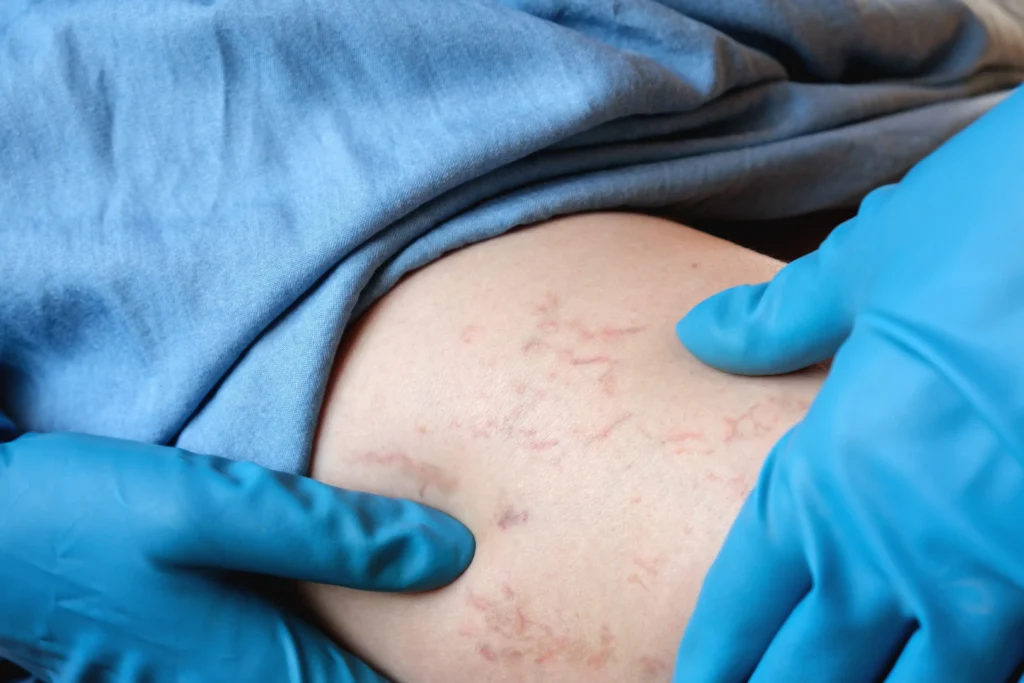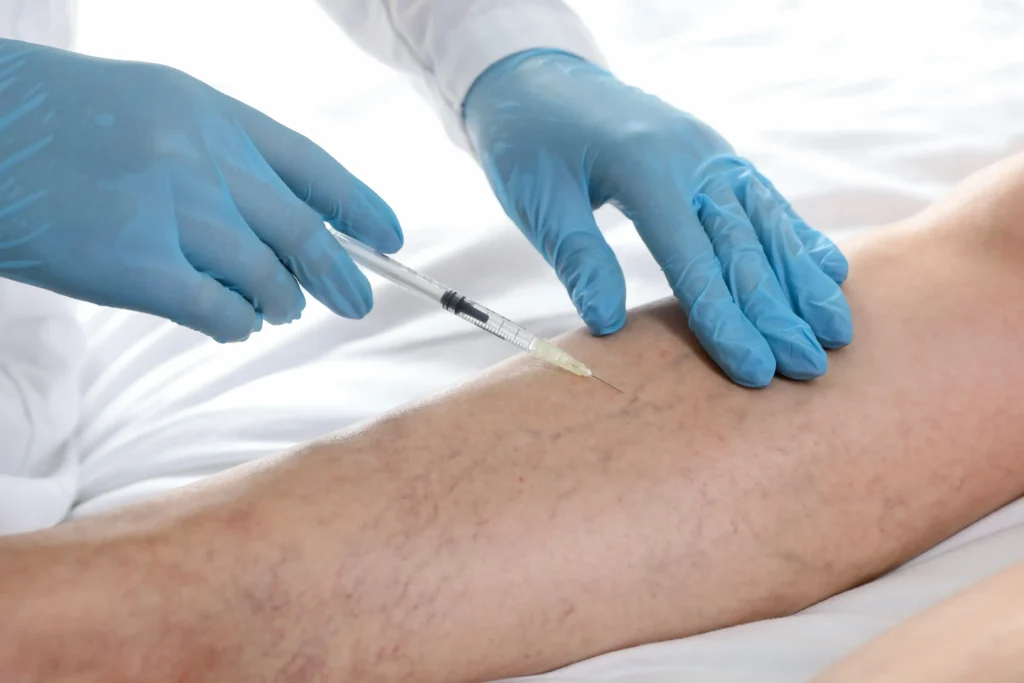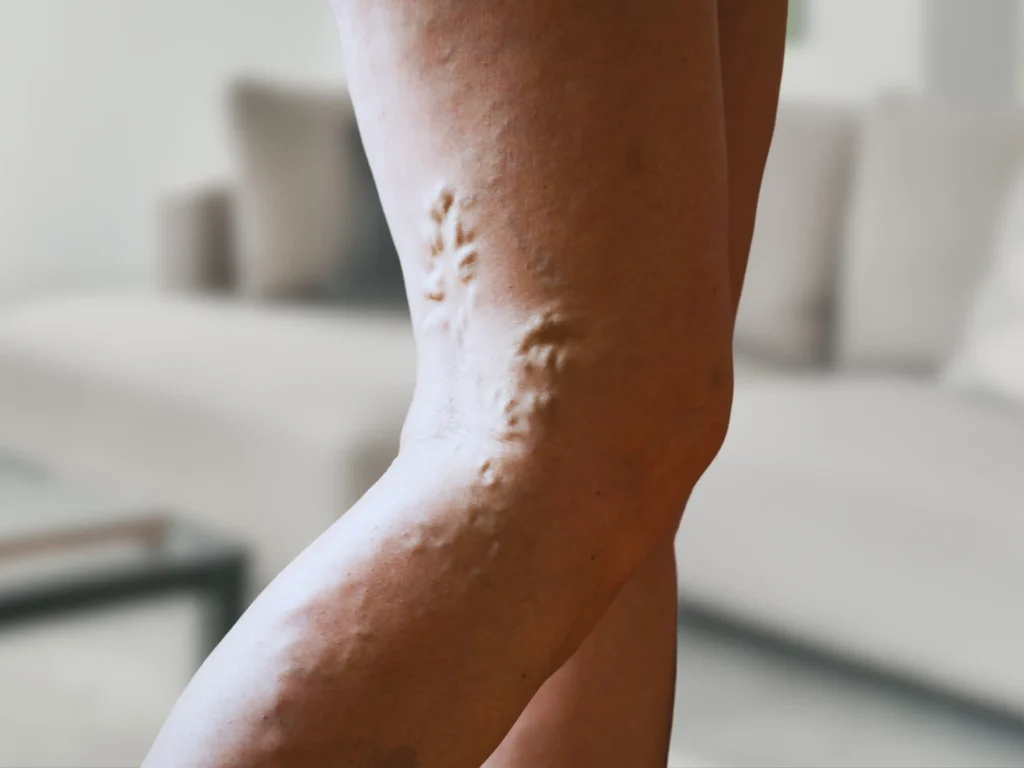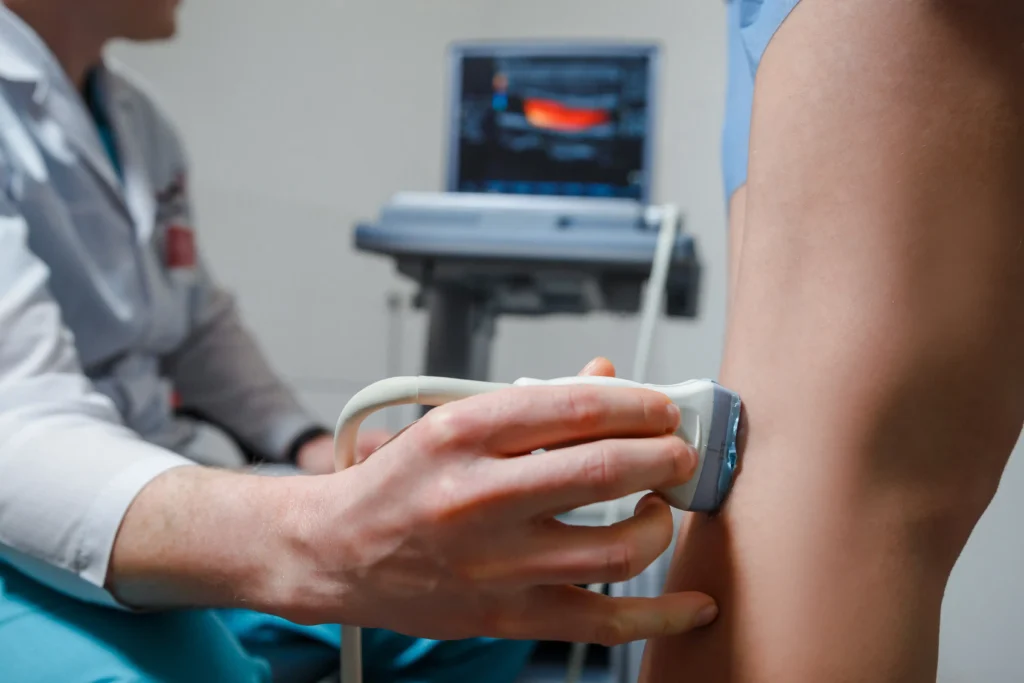Say goodbye to spider veins in Cedar Park, TX
Summary (50 words):
Spider veins are common but treatable. At our Cedar Park vein clinic, patients receive advanced care from Ivy League–trained doctors like Dr. Shane Volney. With ultrasound-guided evaluation and minimally invasive treatment, residents of Cedar Park, Round Rock, and North Austin find relief from pain, improved circulation, and renewed confidence.
What are spider veins?
Spider veins are unhealthy veins located just beneath the skin, most often on the legs. They appear as blue, red, or purple clusters that radiate outward in a spidery pattern. The medical term for spider veins is telangiectasia.
Spider veins are often linked to chronic venous insufficiency, a condition in which blood valves fail and blood pools in the legs.
What causes spider veins?
Spider veins usually develop because of poor circulation in leg veins. When valves weaken, blood leaks backward, increasing vein pressure and leading to new visible veins.
According to the U.S. Office on Women’s Health, over half of women (54%) and nearly half of men (45%) have spider or varicose veins.
Who is most at risk of spider veins?
Spider veins can affect anyone, but some people are more likely to develop them. Risk factors include:
- Family history of vein disease (genetics is the strongest factor)
- Aging
- Pregnancy and hormonal changes
- Obesity or excess weight
- Hormone therapy or birth control pills
- Jobs with long hours of standing or sitting
- Previous leg injuries or blood clots
If both parents had spider veins, your risk of developing them is up to 90%.
What are the symptoms of spider veins?
Spider veins may look cosmetic, but they can also cause physical discomfort.
How do I recognize if I have spider veins?
Spider veins appear as small, thin, web-like veins close to the skin, often in clusters. They are usually red, blue, or purple.
How can I know if it’s spider veins or varicose veins?
Spider veins are small and flat, while varicose veins are larger, bulging, and raised above the skin. Varicose veins also tend to cause more swelling and pain.
What do you recommend to identify them?
If you notice visible veins, aching, or swelling, consult a vein specialist. At our Cedar Park clinic, Dr. Shane Volney may perform an ultrasound to check for underlying venous insufficiency.
What symptoms should I watch for?
Spider vein symptoms may include:
- Heaviness in the legs
- Swelling in the ankles
- Aching or throbbing
- Burning or itching
- Tingling or cramping
- Skin pain or irritation
In severe cases, untreated vein disease can cause skin changes or ulcers.
How are spider veins diagnosed?
Most cases are diagnosed through a physical exam.
Why is ultrasound important?
A duplex ultrasound can show how blood flows in your leg veins. This test confirms whether spider veins are linked to underlying venous insufficiency before treatment.
What treatments are available for spider veins?
Not all spider veins require treatment, but patients may seek care for symptoms or appearance. Minimally invasive options are safe, effective, and performed in-office.
What is sclerotherapy?
Sclerotherapy is the gold standard for spider veins. A fine injection closes the vein so it collapses and fades naturally.
What is laser therapy?
Skin laser therapy can reduce smaller surface veins, especially on the legs or face. It is sometimes combined with sclerotherapy.
What about lifestyle care?
Daily exercise, leg elevation, and compression stockings can help reduce symptoms like swelling and heaviness, though they don’t remove visible veins.
What are the benefits of early treatment for spider veins?
Early care prevents worsening and restores daily comfort.
How does early care prevent complications?
It lowers the risk of worsening swelling, irritation, or skin damage.
How does treatment improve quality of life?
It relieves aching, reduces fatigue, and helps patients stay active.
How does treatment improve appearance?
It fades visible clusters, boosting confidence in wearing shorts or dresses.
Where can I get treated for spider veins in Cedar Park?
You can get treated at the Vein Treatment Clinic in Cedar Park, where specialists like Dr. Shane Volney provide expert care with ultrasound-guided evaluation and minimally invasive treatments.
Why should I choose the Cedar Park vein clinic?
Because we offer board-certified specialists, customized treatment plans, advanced imaging, and insurance coverage for most medically necessary care.
📍 Address: 351 Cypress Creek Road, Suite 200, Cedar Park, TX 78613
📞 Phone: 512-807-6742
🕒 Hours: Mon–Fri, 9:00am – 7:00pm
👉 Find us on Google Maps
Why do patients recommend Dr. Shane Volney?
Patients describe him as “professional, accommodating, and caring,” with an “excellent bedside manner” and “detailed explanations.” He listens to concerns and ensures patients feel comfortable every step of the way.
FAQ about spider veins in Cedar Park
Are spider veins dangerous?
They are usually harmless, but they may indicate underlying venous insufficiency.
How long does recovery take?
Most patients return to normal activities immediately after treatment.
Does insurance cover spider vein treatment?
Insurance may apply if symptoms like pain or swelling are present. Cosmetic-only cases may not be covered.
Can spider veins come back?
Treated veins don’t return, but new ones may form over time. Routine follow-ups help maintain results.







